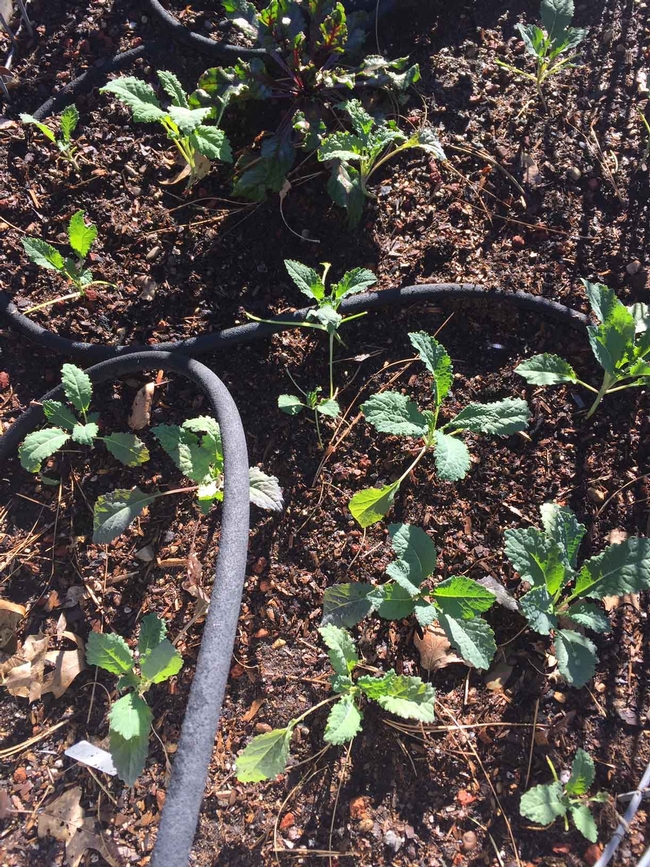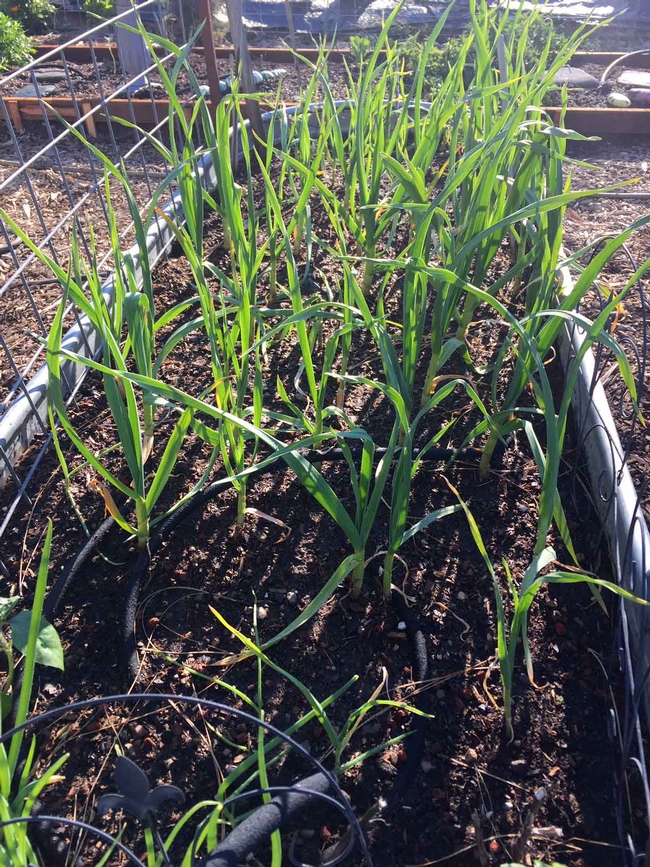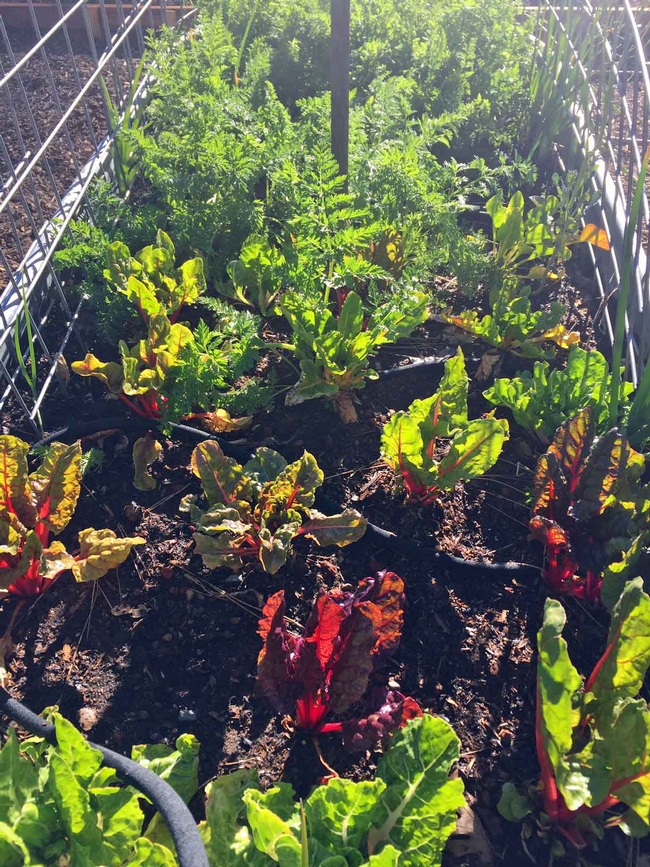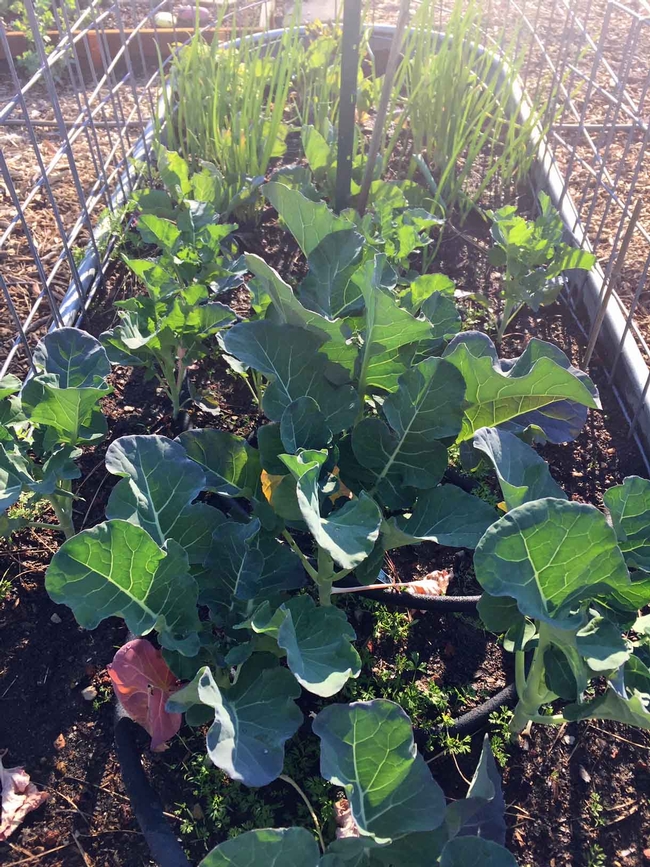Do you associate vegetable gardening with the heat of summer, like fireworks on the Fourth of July or the drone of air conditioners on an August afternoon? The amazing thing about California is that we live in a Mediterranean climate zone with hot, dry summers and mild, wet winters, where we can grow food all year. 
But wait! It's already September -- isn't it too late? Not at all, because every season of the year in California has a surprising variety of plants that can be grown for food right in your back (or front) yard. Last week's Real Dirt column focused on dirt: specifically, finding some! Once you have located your patch of soil, you're ready to begin a garden. The first step is to dig. This sounds uncomplicated, but there is actually more to it than you might imagine. Your soil has a structure that supports plant life as well as billions of bacteria and millions of microorganisms and fungi, not to mention nematodes and earthworms! Digging disturbs soil structure because it destroys soil aggregates, or tiny clumps, that create pore spaces in the soil used as pathways for water, oxygen and plant roots. The University of California Division of Agriculture and Natural Resources (UC ANR) recommends gardeners dig or turn over garden soil no more than once a season and doing so when the soil is moist but not wet to a depth of about 6 inches. A simple shovel works well. A small rototiller is another option (make sure it won't dig too deep). And you don't need to till or dig up the whole garden plot. One smart option is to dig planting rows about 18 inches wide, leaving walking spaces of 24 to 30 inches undisturbed between them. On the other hand, some gardeners do not dig at all, and instead use a gardening method called “No Till.” If you're not a fan of digging, this method is for you!

To start a No Till garden, first mow or trim any vegetation as close to the ground as possible, then water thoroughly and cover the area with cardboard or thick newspaper, dousing the cardboard or paper with water as well. Next, add a four- to six-inch layer of compost mixed with garden soil or worm castings. Compost can be purchased, but you can also make your own for free (for details see Compost in a Hurry). The cardboard or paper beneath the compost will gradually decompose over a period of six to ten months, along with the roots and closely-cut remains of the weeds, lawn or plants underneath the cardboard.

Once, your garden area is prepared you're ready to plant! Think about the vegetables you and your family enjoy eating. Common cool-season vegetables that are planted in the fall include asparagus, beets, broccoli, Brussels sprouts, chives, cabbage, carrots, cauliflower, Swiss chard, kale, leeks, lettuce, onions, garlic, parsnips, peas, radishes, spinach, and turnips. Consult these Master Gardener planting guides for the valley and foothills of Butte County for information on the best months to plant, when you can expect to harvest your crop, and whether to sow seeds or use bedding plants.

Cool season vegetables grow best in early fall when the soil temperature is between 55 and 75 degrees Fahrenheit in the root zone (four to six inches below the soil surface). All cool season vegetables can tolerate light frost, and some, like broccoli, Brussels sprouts, kale, turnips, onions and garlic, for example, can survive even heavy frost. Keep in mind that once the weather turns wintery and soil temperature drops below about 50 degrees Fahrenheit, most vegetables grow very little or not at all until things warm up again in the spring. By getting your vegetables planted now, they will grow happily through the cool, crisp days of autumn until first frost, or even beyond! With a modest investment in seeds and bedding plants, you can put food on the table for yourself and your family, with the satisfaction of knowing you took that unused patch of dirt and transformed it into productive ground.
The UC Master Gardeners of Butte County are part of the University of California Cooperative Extension (UCCE) system. To learn more about us and our upcoming events, and for help with gardening in our area, visit our website. If you have a gardening question or problem, email the Hotline at mgbutte@ucanr.edu (preferred) or call (530) 538-7201.